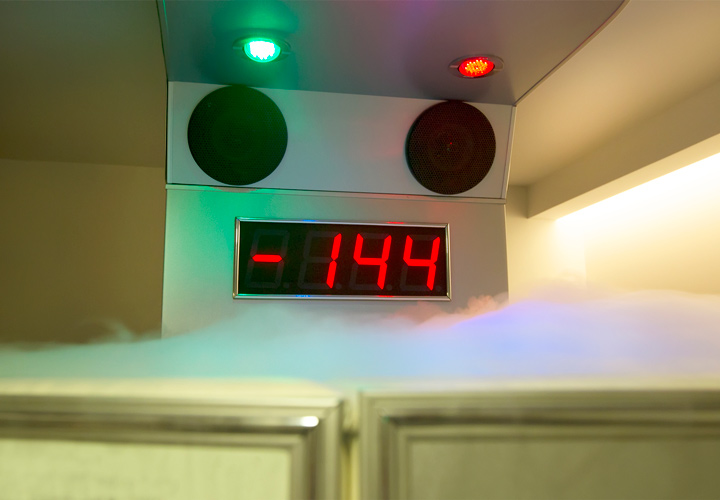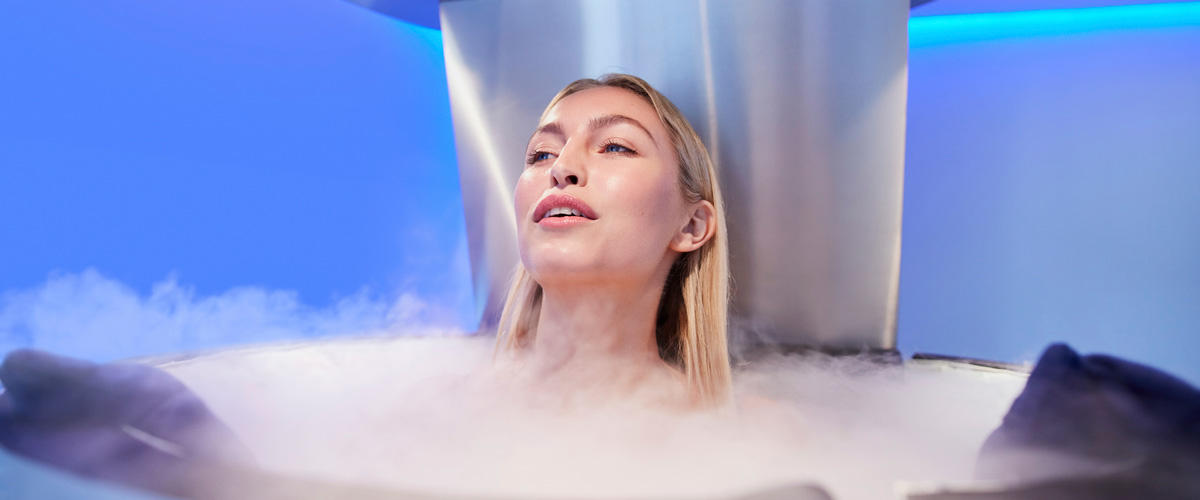Known to help lose weight, reduce pain, improve sleep, and improve athletic performance, Whole Body Cryotherapy (WBC) has been used by high profile athletes and celebrities alike for years. Cryotherapy is the use of any ice or cold materials to treat an area on your body. WBC is when the whole body is exposed to very low (subzero) temperatures – sometimes below -200 degrees Fahrenheit for about two to four minutes.
Whole body cryotherapy was developed in 1978 in Japan for treating rheumatoid arthritis. For more than three decades WBC has been used in both Europe and Japan, many European countries also cover these treatments in insurance policies.
How Does Cryotherapy Work?
The Cryosauna you go into uses gasiform nitrogen to lower your skin surface temperature about 30-50 degrees Fahrenheit over a two to three minute period. Liquid nitrogen then cools the Cryochamber, but you are never in direct contact with the gas during this step. The reaction between your skin and the cold sends messages to your brain, which acts as a stimulant to the regulatory functions of your body. Anti-inflammatory molecules and endorphins are released when the skin is exposed to these extreme temperatures.
How Will You Feel After a Treatment?
This treatment enhances your mood, as each session releases endorphins, which makes you feel energetic. These effects can last for days; putting you in a better mood as well as making you feel more motivated and excited.
Related: Float Therapy: A Healthier Way to Get Tanked
Is Cryotherapy Safe?
Walk-in chambers have been used for the past thirty plus years without any negative adverse reactions recorded. Clients must take direction very seriously and follow all of the precautions when using WBC. Problems have arisen when clients have had wet clothing, as the water will freeze immediately at these temperatures. In the single person chamber the client’s head must be above the nitrogen vapors, which is why the operator will raise the platform as needed depending on the client’s height. Oxygen monitors are also at the client’s mouth, which shuts off the nitrogen supply if the oxygen concentration drops by 0.5%. Clients also wear socks, slippers, and gloves to protect the more temperature sensitive areas on their bodies. Face-masks are also provided to protect clients from inhaling cold air, as well as earmuffs to cover their ears.
Is Cryotherapy Uncomfortable or Painful?
Clients are in comfortable protective clothing throughout the procedure. The session is only two to three minutes and the cold air is ‘dry’ so it is very tolerable. Some clients have felt a pins and needles sensation but it goes away immediately after the treatment.
Here’s a list of conditions that prohibit you from doing WBC:
- Pregnancy
- Severe Hypertension
- Acute or recent myocardial infarction
- Unstable angina pectoris
- Arrhythmia
- Symptomatic cardiovascular disease
- Cardiac pacemaker
- Peripheral arterial occlusive disease
- Venous thrombosis
- Acute or recent cerebrovascular accident
- Uncontrolled seizures,
- Raynaud’s Syndrome, fever
- Tumor disease
- Symptomatic lung disorders
- Bleeding disorders
- Severe anemia
- Infection
- Claustrophobia
- Cold allergy
- Age less than 18 years (parental consent to treatment needed)
- Acute kidney and urinary tract diseases
Risks of Whole Body Cryotherapy
- Allergic reaction to cold
- Redness
- Skin burns (if exposed to low temperatures for longer than recommended)
- Claustrophobia
Before undergoing a treatment of WBC, discuss the benefits and risks with your doctor. Depending on your age, health, and reasons for wanting the treatment your doctor may not think WBC is right for you.
Read more: The Miracle Of Stem Cell Therapy




